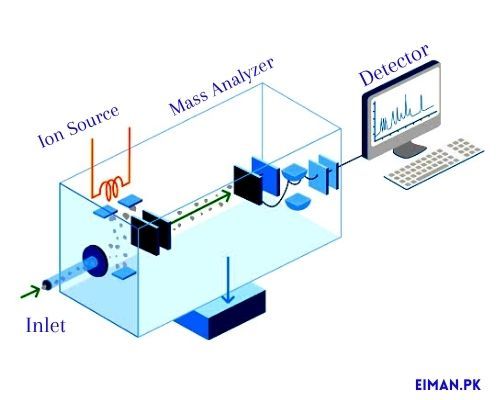Defination
“Ions are those species which carry either positive or negative charge”.
An ion is a charged atom. It is charged because the number of electrons does not equal the number of protons in the atom or molecule. An atom can acquire a positive charge or a negative charge depending on whether the number of electrons in an atom is greater or less than the number of protons in the atom.
Examples of Ions are Na+ , Fe2+ , Mg2+ , Fe3+ , Ca2+ , P3− etc.
Formation:
Ions are formed when atoms lose or gain electrons to fulfil the octet rule and have full outer valence electron shells. When they lose electrons, they become positively charged and are named cations. When they gain electrons, they are negatively charged and are named anions. Electrons can be lost or gained from other atoms. When an atom gains or loses electrons an ion is formed. An ion has a positive or negative charge, depending.
Types:
There are basically two types of ion:
• Cation
• Anion
Cation:
“Whenever an atom of an element loses one or more electrons, positive ions are formed, these are called Cations”
A cation is an ion with a positive electric charge. An ion is an atom or a group of atoms that have an electric charge by gaining or losing one or more electrons. They are formed when a metal loses its electrons. They lose one or more than one electron and do not lose any protons. Therefore they possess a net positive charge. Some examples of cations are Calcium (Ca2+), Potassium (K+), hydrogen (H+).
Ag+ Silver He2+ Helium
Al3+ Aluminium Hg2+ Mercury(II)
Ba2+ Barium K+ Potassium
Be2+ Beryllium Li+ Lithium
Ca2+ Calcium Mg2+ Magnesium
Cd2+ Cadmium Mn2+ Manganese(II)
Co2+ Cobalt(II) Na+ Sodium
Cr2+, Cr3+, Cr6+ Chromium(I, II, III) Ni2+, Ni3+ Nickel(II, III)
Cs+ Caesium Pb2+, Pb4+ Lead(II, IV)
Cu+, Cu2+ , Cu3+ Copper(I,II,III) Sn2+, Sn4+ Tin(II, IV)
Fe2+, Fe3+ Iron(II, III) Sr2+ Strontium
Ga3+ Gallium Zn2+ Zinc
H+ Hydrogen
1) Formation of a cation
A cation is a positive ion that is formed from an atom that loses some of its electrons.
Indeed, after a loss of electrons, the negative charges become less numerous than the positive charges.
Example:
formation of the aluminium ion
The aluminium atom is composed of:
– 13 electrons which carry a total of 13 negative charges.
– 13 positive charges in its nucleus.
This atom can lose 3 electrons to become an aluminium ion which is then made of:
– 13 – 3 = 10 electrons which carry a total of 10 negative charges.
– 13 positive charges in its nucleus (the nucleus is not affected by the loss of electrons)
If we compare the positive and negative charges it can be seen that the aluminium ion has three positive charges in excess (13 positive charges and 10 negative charges).
This excess charge is denoted by a superscript (top right) in the formula of the aluminium ion: Al3+.
Anion
Whenever an atom of an element gains one or more electrons, positive ions are formed, these are called Anions.”
2) Formation of Anion:
Anions are atoms or radicals (groups of atoms), that have gained electrons. Since they now have more electrons than protons, anions have a negative charge. For example, chloride ions Cl-, bromide Br-, iodide I-.
Formula Name
AsO33− Arsenite HPO42− Hydrogen phosphate
AsO43− Arsenate HSO3− Hydrogen sulfite
BO33− Borate HSO4− Hydrogen sulfate
BrO− Hypobromite IO3− Iodate
BrO3− Bromate MnO4− Permanganate
ClO− Hypochlorite NO2− Nitrite
ClO2− Chlorite NO3− Nitrate
ClO3− Chlorate OH− Hydroxide
ClO4− Perchlorate PO33− Phosphite
CO32− Carbonate PO43− Phosphate
Cr2O72− Dichromate S2O32− Thiosulfate
CrO42− Chromate SO32− Sulfite
HCO3− Hydrogen carbonate SO42− Sulfate






